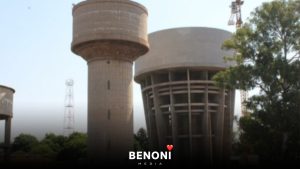Introduction:
A recent volcanic eruption on Iceland’s Reykjanes Peninsula has sparked a state of emergency in southern Iceland. This marks the fourth eruption in the region since December, raising significant concerns about the impact of lava flows and potential risks to nearby communities.
What Unfolded:
The eruption kicked off on Saturday night with a dramatic display of powerful lava flows. While initially intense, the pace of the lava flow has since steadied, as reported by the Icelandic Met Office. The eruption site, near Grindavik, a mostly evacuated town, is witnessing a slow advance of lava towards critical infrastructure such as water pipes and power plants.

Understanding the Risks:
Experts are closely monitoring the situation amid fears of potential hazards if the lava reaches the sea. There’s a concern over the production of dangerous gases and the possibility of small explosions triggered by the interaction of lava with seawater. Despite proactive measures by authorities, there remains a tangibale concern regarding the impact on infrastructure and the safety of nearby residents.
The Scientific Insight:
Scientists are closely studying this eruption, considering it one of the most significant events in the region. The potential for lava reaching the sea adds another layer of complexity to the situation. With multiple eruptions in the Reykjanes Peninsula since 2021, there’s a growing realisation that Iceland might be entering a phase of prolonged volcanic activity.

Local Impact and Response:
The eruption has demanded evacuations and road closures, with a focus on safeguarding critical infrastructure such as internet cables. Notably, the closure of the Blue Lagoon, a renowned tourist attraction, underscores the seriousness of the situation. While some residents are opting to remain in Grindavik despite the risks, others are contemplating relocation.
Conclusion:
Given Iceland’s geological makeup and its position on the Mid-Atlantic Ridge, Iceland’s volcanic eruption activity is not uncommon. However, the recent eruptions in the Reykjanes Peninsula emphasise the importance of continuous monitoring and preparedness to mitigate the impact of such events on communities and infrastructure.









